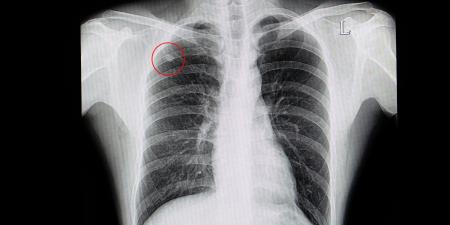Over the last 2 centuries, technology has brought different regions of the world closer together. Trends like urbanization and cross-border migration—often consciously promoted through national economic policies and international treaties—mean that people, goods, words, and ideas are circulating further and more rapidly than ever before.
Unfortunately, the negative consequences of this large scale social and economic change seem to weigh as heavily in the balance as the positive. Entrenched inequalities within and between countries often contribute to development that is pathogenic in character rather than therapeutic. We see that integration of the human community can spread illness as well as healing, destruction as well as hope. The ancient aphorism that "God provides the cure along with the disease," rings hollow in many poor countries where the medicines developed to combat emerging infectious diseases are either unavailable or unaffordable.
The HIV/AIDS pandemic is both a high profile example of this troubling state of affairs and a significant factor in perpetuating it. Of the 8 key areas in the Millennium Development Goals, 6 are being undermined by the high rates of HIV in poor and middle-income countries.1 The latest estimates suggest that in the last year alone, approximately 4.9 million human beings became newly infected with HIV, and 3.1 million died of AIDS. Some 39.4 million people are now living with the virus, whose cumulative death toll since the first cases were identified in the early 1980s is now well over 20 million.2
The toll of AIDS morbidity and mortality is geographically and sociologically uneven. The situation is particularly frustrating because, while a cure for the disease still eludes medical science, there are nevertheless good tools to slow or arrest its clinical course. AIDS is unusual in the history of epidemics because proven, effective ways of interrupting the course of the disease have existed since shortly after its emergence. Those methods, however, are foreclosed to most of the world's population. Of the world's unmet need for antiretroviral therapy (ART), an estimated 72 percent is in sub-Saharan Africa and 22 percent is in Asia, accounting for more than 9 out of 10 people in need of treatment.
Treating the sick appears to have significant epidemiological consequences. After the clinical efficacy of "triple therapy" was first demonstrated in the mid-1990s, the Brazilian legislature guaranteed all AIDS patients in the country—regardless of their financial or legal status—access to necessary medications for HIV treatment, including ART. Between 1995 and 1999, AIDS-related mortality in Brazil dropped 50 percent, incidence of new cases declined sharply, and prevalence was cut to half the rate projected in 1992.3,4 Eight years after the program was initiated, a cross-sectional study of patients in treatment at public HIV clinics in Rio de Janeiro showed rates of response and adherence to ART comparable to rates reported by more developed countries.5
Beginning with the 2001 UN General Assembly Special Session on HIV/AIDS (UNGASS), an emerging international consensus on the urgency of fighting the pandemic inspired sharp increases in funding. Resources channeled through the Global Fund to Fight AIDS, tuberculosis, and malaria, and later through bilateral programs such as the US President's Emergency Initiative for AIDS Relief, marked a new era in international public health. This sense of possibility led WHO, UNAIDS, and their partners to challenge the UN system and the global community as a whole. Launched in late 2003, the "3 by 5" project aims to make make ART accessible to half of those in immediate need of treatment in each high burden country—an estimated 3 million people worldwide—by the end of 2005.
The announcement of "3 by 5" came from a widespread sense that inequalities in access to AIDS treatment and care have unacceptable economic, political, moral, and epidemiological consequences. Driven by grassroots community activists, the renewed commitment by UNAIDS and WHO was both an admission of guilt by the international system for its tardy response to the crisis and a grim recognition of the need for an accelerated response, with clear outcome measures helping to assess the strategy's success and failure.
The "3 by 5" target is founded on 4 key principles: (1) urgency; (2) accountability through consensus interim targets; (3) simplified diagnostic and program tools; and (4) treatment as a core element of the response. It is important to stress that while treatment is the most concrete element of the intended goals of "3 by 5" it is not the only goal. Treatment provides a clear focus and an inspiration for the communities hardest hit by the epidemic and the international community as a whole, but this will only be effective within the framework of a comprehensive public health response, including chronic care infrastructure and prevention of further transmission. For example, treatment programs cannot expand without effective measures to scale-up testing and counseling—which is equally important for preventing HIV transmission at the population level.
From the outset, "3 by 5" has been driven by a sense that we must begin immediately to move towards universal access to HIV care, treatment, and prevention. It recognizes that the best way to do so is to agree upon clear, measurable targets at the country level. The natural history of HIV and the political history of AIDS demonstrate that any delay in confronting the disease makes the task progressively more daunting. Early interventions, by contrast, can provide large cost savings to the public sector and prevent devastating losses of human capital.6
A comprehensive response including treatment, care, and prevention is inevitably expensive. Despite significant price declines for antiretroviral medicines in recent years (a generic 3-drug regimen can now be procured for as little as $150 per patient per year, although generally costs are much higher), even the lowest price exceeds per capita health expenditure in many countries, both from private and public sources, sometimes by an order of magnitude.
Although drug costs have gotten most of the publicity, they are by no means the only barrier that people in developing countries face when attempting to secure access to HIV-related services. In much of the developing world, the community-level infrastructure necessary for public outreach by health professionals and diagnosis of those infected has been undermined by sharp cuts in government health sector spending over the last 2 decades. This impedes not only care and treatment but also proven prevention strategies such as community outreach to promote monogamy and condom use, harm reduction for vulnerable populations, and diagnostic testing and counseling. Moreover, while "triple therapy" can encourage a shift from acute to chronic care models, the absence of a cure requires that the commitment to the patient be lifelong. For most high-burden countries, meeting that challenge alone is inconceivable.
The sustainability of programs designed to fight the HIV/AIDS pandemic must therefore be thought of as global in scope. If financing and technical support are not forthcoming to adapt existing clinical and public health tools to conditions in high-burden countries, those tools will remain accessible only to a fortunate few. Such a failure of international political will would not only deny millions their fundamental right to benefit from the advances of science, but would set back social development in high burden countries by decades and would undermine political and economic security for all countries. However, a transnational program model for HIV/AIDS interventions demands unprecedented cooperation among high burden countries, donors, providers, and community members—including people living with HIV/AIDS.
The "3 by 5" deadline is now 6 months away, and, as might be expected given the range of countries affected by the AIDS epidemic, rates of HIV/AIDS program expansion have varied widely. In many countries, such as Zambia, Malawi, Uganda, Botswana, and Thailand, infrastructure and collaborative frameworks have been implemented that now allow hundreds of thousands of people to access a level of medical care that, just months ago, was unimaginable. By throwing an antiretroviral lifeline to communities and individuals ravaged by AIDS, the "3 by 5" target has given us a crucial insight: hope is a public health resource. Countries fractured by the epidemic have united under the banner of treatment access, emphasizing how much effective treatment, care, and especially prevention depend on active mobilization by all sectors of society.
Meanwhile, under the pressure of "3 by 5" many technical and organizational challenges to expanding AIDS interventions have come into focus. The acute care model that still dominates the health sector in most resource-limited settings simply does not work for AIDS. In the absence of magic bullets, fighting AIDS requires new systems.
After effective dialysis revolutionized the approach to diabetes and other causes of renal failure in the 1950s and 1960s, health systems in industrialized countries underwent a similar shift. Increased access to effective HIV treatment is predicated on improvement in health worker training, clinical referral systems, drug supply chains, community outreach, and other facets of an integrated response. These systems are not unique to HIV/AIDS—"3 by 5" has jump-started a process that can make lasting contributions to the healthcare infrastructure in developing and transitional countries.
Understanding the reasons for success and failure of HIV/AIDS interventions in different settings is critical as we race to meet the December deadline set by the "3 by 5" strategy. Perhaps more importantly, that understanding is key to the real aim of ensuring universal access to HIV treatment, care, and prevention. The lessons learned so far have reinforced our certain knowledge that social, economic, and technological development do not happen easily or automatically. They are not the responsibility of any single country, organization, or individual. They are a collective project of the human community.
References
-
UN Millennium Project. About the Goals. Available at http://www.unmillenniumproject.org/goals/index.htm. Accessed June 27, 2005.
-
WHO, UNAIDS. AIDS epidemic update. Geneva, Switzerland: World Health Organization, UNAIDS; December 2004.
-
Oliveira-Cruz V, Kowalski J, McPake B. The Brazilian HIV/AIDS "success story": can others do it? Trop Med Int Health. 2004;9(2):292-297.
-
Rüppel J. Universal and Free Access to Antiretroviral Therapy: the Experience of Brazil. Paper presented at: Access to ART in Developing Countries workshop; August 24-26, 2001.
- Hofer CB, Schechter M, Harrison LH. Effectiveness of antiretroviral therapy among patients who attend public HIV clinics in Rio de Janeiro, Brazil. J Acquir Immune Def Syndr. 2004;36(4):967-971.
-
Commission on Macroeconomics and Health. Macroeconomics and Health: Investing in Health for Economic Development. Geneva, Switzerland: World Health Organization; 2001.



